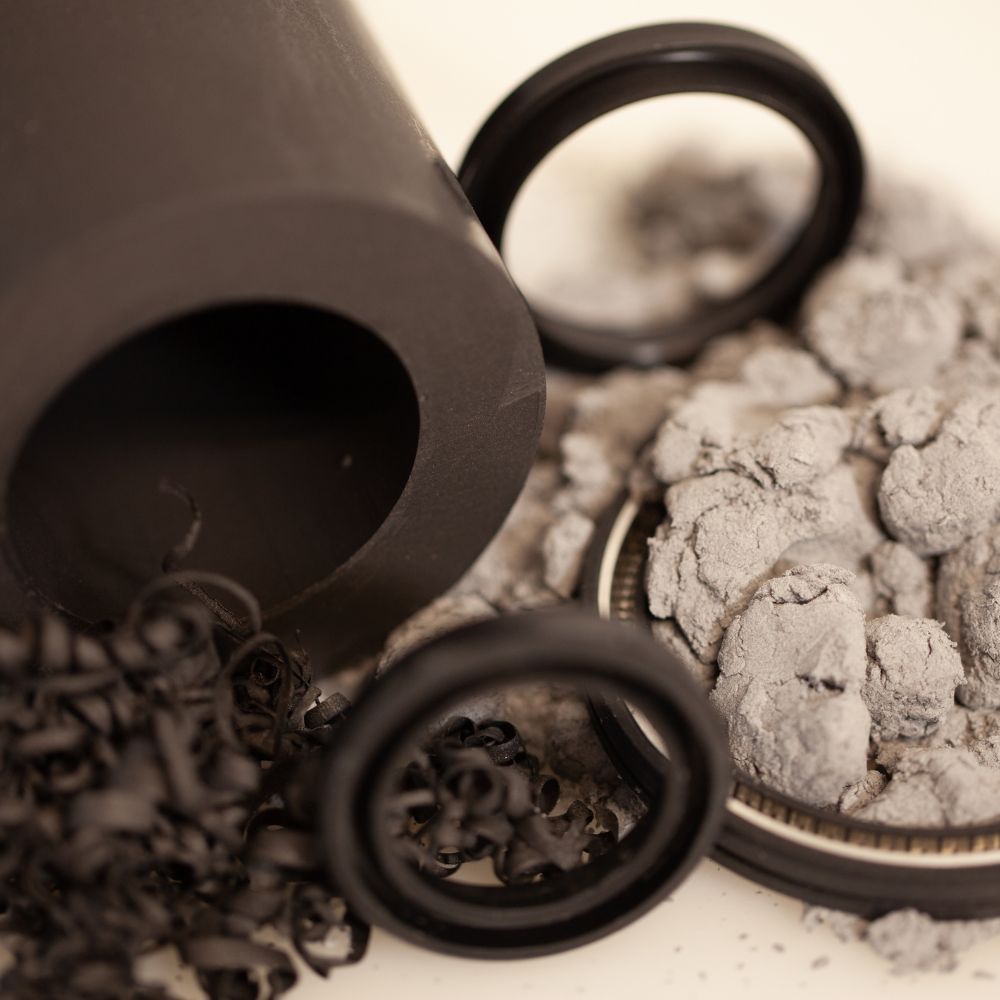New Ptfe compounds
PTFE (Polytetrafluoroethylene) is a resin with a low friction coefficient, high thermal resistanceand excellent resistance to chemical agents.
These features make PTFE a highly productive and widely used material in the technical field even under complex conditions. In particular it is used in sealing systems for the manufacture of gaskets and high performance bushings.
Self-lubrication in rotating/moving applications, where PTFE deposits particles in the irregularities of the contact surface to create a real sliding bearing, is one of the most appreciated by designers.



Virgin PTFE resin possesses exceptional physical-chemical properties for static applications. In addition, its features can be improved for dynamic applications by using PTFE with specific additives that create a compound respondent to the needs of specific applications. The ability to formulate customised PTFE based compounds means we can produce materials that are compatible with specific operating conditions. In addition to the classically known and applied additives in the world of mechanics, such as carbon fibres used to improve resistance to wear and some friction reducers such as graphite, il ATP Research Center can produce high performance PTFE filled with specific percentages of additives and able to meet the market’s increasingly demanding requirements. Total control of the production chain from the dust to the semi-finished product makes for high quality materials. In particular, all our products are subject to internal verification in the ATP Laboratory, equipped with the most up-to-date analytical instruments.
Tribometer and usury analysis
Tribology is the science that studies friction, lubrication and wear, i.e. all the processes that occur between two interacting bodies in relative motion.
The research and development of innovative materials with a fluoropolymer matrix has pushed ATP towards a more in-depth study of the tribology of materials and an optimisation of the factors that influence the tribological system, such as the environmental and operating conditions and the type of surface with which the material under examination interacts. The tribometer is the instrument used to calculate the wear rate and coefficient of friction of polymeric materials in contact with a given counter-surface, and under specific operating conditions.
The ATP laboratory currently uses two tribometers for:
- Tribological tests in rotary mode
- Tribological tests in alternative mode
Thanks to ‘plug and play’ accessories, the wear test can be conducted in three different configurations:
The first test configuration consists of a pin, either cylindrical or having a spherical cap, which is pressed against a rotating disc. The pin is loaded with standard weights (from 1 to 60 N), while the rotational speed of the disc is set (from 0.01 to 5000 rpm), which remains constant throughout the test.
The second configuration consists of a plate-shaped sample being pressed onto a rotating disc (0.01 to 500 rpm).
In both cases, the test stops when a preset sliding distance is reached. The output of the test is the friction coefficient, which is monitored continuously, and the wear rate calculated as the ratio between the volume of material removed and the product of the applied load and the sliding distance.
The third configuration makes it possible to simulate the alternative movement of a pin, subject to a load, on a given counter-surface.
Tests can be carried out in lubricated and unlubricated conditions and under certain environmental conditions with the help of a climatic chamber that allows temperatures of up to 300°C.

